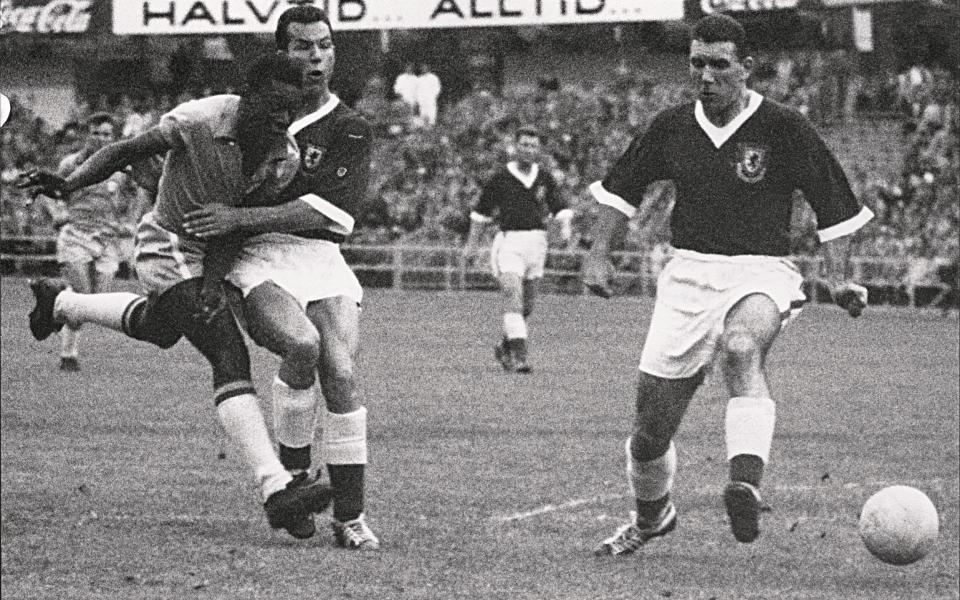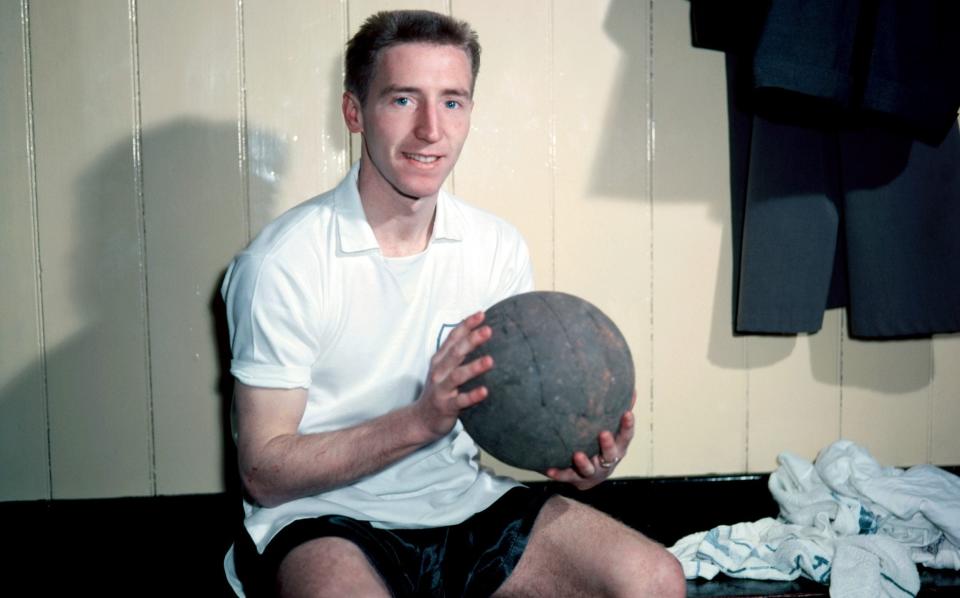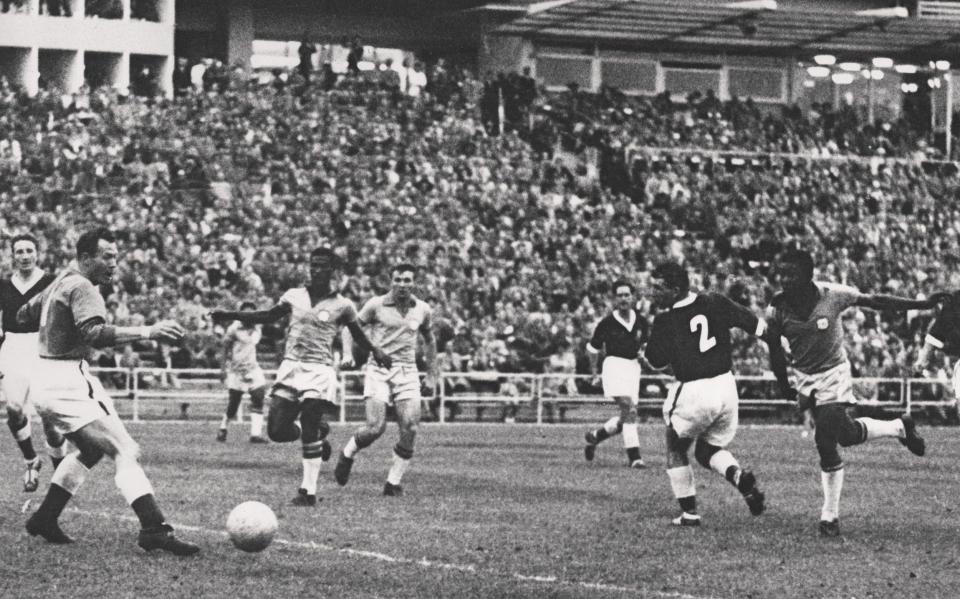Cliff Jones exclusive: 'Pele was just 17 – it was a privilege to see him score against us!'

More than 64 years have passed since Wales played Brazil in the 1958 World Cup and for Cliff Jones, at the age of 87, the recollections have inevitably begun to fade. “Remembering it all,” he says. “That is the problem for me.”
There are, though, some memories that will forever burn bright in his mind. As the former Wales and Tottenham Hotspur winger thinks back to those days, he almost seems to be reliving the moment as he explains how a footballing superstar, perhaps the greatest superstar of them all, once materialised in front of his eyes.
The way Jones tells it, the 17-year-old Pele received possession in his own half, weaved past four Welsh defenders and smashed a shot towards goal. Only the reflexes of Jack Kelsey, the Wales goalkeeper, denied the Brazilian his first major World Cup moment.
“We looked at each other and thought: ‘Who is this kid?’” laughs Jones. “And that was the emergence of the greatest player the world has ever seen. It is a privilege to have seen that happening, to be a part of it. A special moment. A wonderful experience. Seventeen-year-olds don’t do that normally.”
Sadly for Jones and his Wales team-mates, there was to be no stopping Pele later in the quarter-final. The young striker controlled the ball on his chest and then, in an instant, flicked it over the legs of Mel Charles, the Wales defender. Before Wales could understand what was happening, the ball was in their net. Pele was in there, too, celebrating wildly.
Footage from that day shows how some of the more intrepid pitchside photographers, knowing a story when they saw one, ran on to the playing area in an attempt to get the best shot. The resulting images captured one of the most significant moments of Pele’s career, and also a pivotal point in Welsh footballing history.
“I consider it the most important goal I have ever scored,” Pele once said of this goal, his first at a World Cup. It served as the teenager’s springboard: he went on to score a hat-trick against France in the semi-final, before hitting another two in the final against Sweden. “The world now knew about Pele,” as the Brazilian has said.
For his opponents, that moment had the opposite effect. Pele’s goal was the start for him, but for a long time it marked the end for Wales, who have not played a World Cup game since. Pele knocked them out in 1958 and, for many Welshmen over the past six decades, there must have been times when it felt like they would never make it back to football’s greatest show.
To hear Jones reminisce about their time in Sweden is to hear of a different world and, in many ways, a different sport. “We met in London before the tournament,” he tells Telegraph Sport. “And we had no training facilities whatsoever. We did most of our training at Hyde Park.
“In one session, the park keepers came on and chased us off. But we just took it all in our stride, being Welsh boys. There were no markings so we just put our shirts down for goals. There were more dogs than players.”

The team stayed in the area of Saltsjobaden, where they soon assimilated into the local culture. “It was a lovely place,” says Jones. “On the edge of a lake. We mixed in with everybody and the locals took us on board as their team. They waved us goodbye when we went to games, and then cheered us when we came back. They loved us, and we loved them. It would not happen these days.”
Wales reached that tournament in large part due to good fortune – they defeated Israel in a play-off after a series of countries had refused to play against the Israelis – but they performed admirably in Sweden, drawing their three group games and then defeating Hungary in a play-off.
Prior to their match against Brazil, they had two problems. The first was the fitness of John Charles, their star striker, who was in a race against time to be available after suffering an injury against Hungary. The second was the Brazil winger, Garrincha. “He had these funny legs,” says Jones. “But he could play.”
In the Telegraph’s pages at the time, the great sportswriter Donald Saunders wrote the following: “The man Wales must watch is Garrincha, a right-winger who is said to juggle the ball as expertly as Stanley Matthews and at twice the speed.”

As it turned out, of course, the bigger threat came from Pele. But even now, all these years later, Jones wonders what might have been possible if John Charles had been able to face the Brazilians.
“He was the best centre-half I had ever seen and the best centre-forward I had seen,” says Jones. “If John Charles had been playing centre-forward, we could have beaten them and gone on to win the World Cup. I mean it. He was so dominant in the air and brilliant on the ground as well. They would never have come across anybody like John Charles.”
Charles was playing for Juventus at the time, the talisman based a long way from home. It is the same now with Gareth Bale, preparing to lead his team back into World Cup action at long last.
Jones visited Wales at their training camp before they flew out to Qatar. He and Terry Medwin, two of the four surviving members of the 1958 squad, spoke with Bale and manager Rob Page, sharing stories and telling tales. “One of the great players in world football,” says Jones of Bale.
The experiences of Bale and the rest of the class of Qatar 2022, who start their campaign against the United States on Monday, will be markedly different to those of Jones and the class of Sweden 1958. The two groups will forever be linked, though, by a shared sense of pride at what they have achieved. “Wales at the World Cup again,” says Jones. “It’s about time.”

